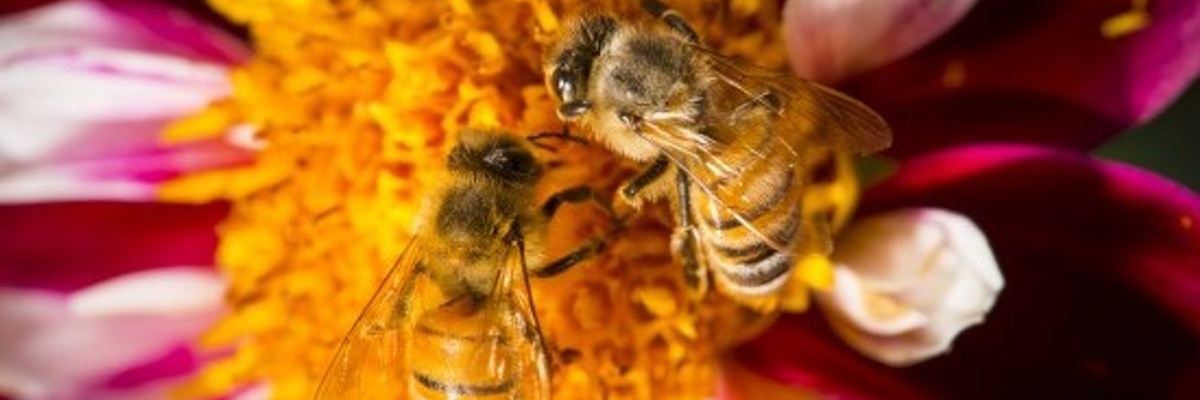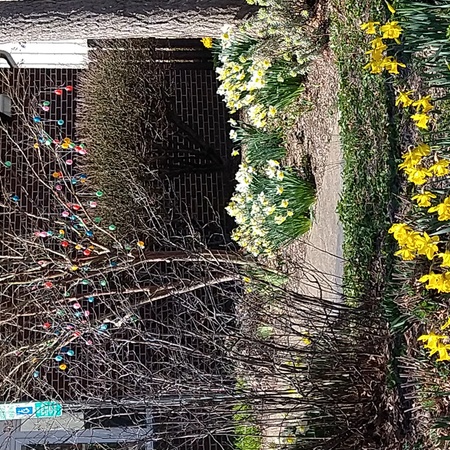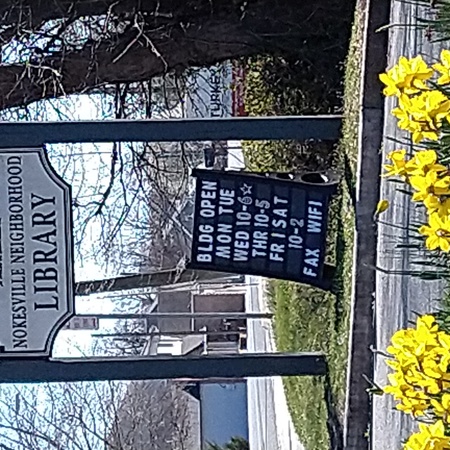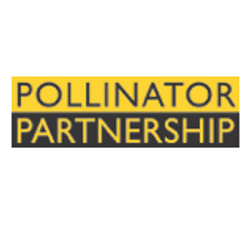

Whether you are a farmer of many acres, land manager of a large tract of land, or a gardener with a small lot, you can increase the number of pollinators in your area by making conscious choices to include plants that provide essential habitat for bees, butterflies, moths, beetles, hummingbirds, and other pollinators. Happy planting!
Whether you are a farmer of many acres, land manager of a large tract of land, or a gardener with a small lot, you can increase the number of pollinators in your area by making conscious choices to include plants that provide essential habitat for bees, butterflies, moths, beetles, hummingbirds, and other pollinators. Happy planting!
April 22, 2023
The first hummingbird has arrived in Nokesville and... it's a boy!
April 18, 2023
Hummingbirds have been spotted in Lake Ridge already, but not yet in Nokesville!
April 10, 2023
The hummingbird feeders have been filled and hung in anticipation of the hummer's impending return. Hummingbirds return to their territory each spring. Rebecca has been tracking them online (journeynorth.org) and there are multiple sightings in Virginia this week.
A natural sign that the hummers are coming is the flowering of native columbine (aquilegia canadensis). Columbine is pollinated by hummers so when the blossoms open, the birds can't be far behind. Here's ours:

April 10, 2023
Our Virginia bluebell is blooming! Virginia bluebells grow in bottom land (floodplain) along rivers. This guy has grown in the arid front garden of the library for many years. How it survives there is a mystery but we're glad to have it.

April 10, 2023
Just one more daffodil... this is the smallest daffodil I've ever seen. It's blooming in the front garden by the handicapped parking space.

April 5, 2023
If you're using the glorious weather this week to get outside and clean up your garden beds, please leave six to eight inches of dead stems standing when cutting down perennials. The dead stems provide a place for leaf cutter bees to nest. The dead stems won't look ugly because new foliage will quickly grow up to cover them.
Notice how the monarda stems are hollow in the attached photo. They're a perfect home for native bees.

April 1, 2023
Wild flower lovers: the Virginia bluebells are blooming! Saturday, April 8 is the date of the Merrimac Farm bluebell festival but the flowers didn't wait. Merrimac Farm Wildlife Management Area in Nokesville is a great place to see bluebells because the hiking trail along Cedar Run winds through a patch of bluebells a mile long. Understandably, the trail is crowded and parking is crazy during bluebell season.
Another great place to see bluebells is the nature trail at Brentsville Courthouse Historic Center. The trail takes you down to the bank of Broad Run where a fishing dock provides a place to sit and enjoy the tranquil surroundings. The far side of the stream is carpeted with bluebells for as far as you can see. At Brentsville, you won't be walking among the bluebells but the forest is quiet and parking is a breeze.
Both locations are free to visit. Brentsville charges a fee to tour the historic buildings (the jail is COOL) but hiking the grounds is free. A Virginia fishing license is required to fish in Broad Run.
March 31, 2023
The daffodils continue to strut their stuff. I was delighted to see the pollinator garden plants beginning to wake up. A multitude of coneflower seedlings are growing where messy finches dropped seed last year. Milkweed is the very last plant to break dormancy each spring so if your milkweed isn't up yet (ours isn't) don't fret.
The best surprise was in the back lawn. Like many northern Virginia lawns, our lawn contains viola sororia, the common blue violet. But we also have Confederate violets, viola sororia priceana. Confederate violets bear white flowers with a grayish blue tint. The grayish blue is reminiscent of Confederate military uniforms.
Trying to convince American homeowners to stop using herbicides on their lawns and allow wildflowers to grow amid the grass is a real challenge for environmentalists. Prior to the 1950's, violets, crocus, clover and other small flowers were deliberately grown in lawns to provide interest. Lawns containing flowers were called "enamelled" lawns. Allowing flowers to grow in lawns again would be a great boon to the bees. Hooray for our enamelled lawn at the library!




Daffodils large and daffodils small...
come see our daffodils 'cause we've got 'em all!



March 1, 2023

December 14- The addition of the new storage shed allowed the library to remove a dilapidated storage cabinet that was located by the back door. Removal of the cabinet gave us an additional eight square feet of garden space. Yay! Today I transplanted several clumps of rudbeckia fulgida (black-eyed susans) from my personal garden to fill that space. R.fulgida is a native plant which appeals to tiny native bees. It also appeals to humans if they like that shocking Cheeto orange color. It's a tough plant that thrives in hot, dry locations. It spreads by rhizomes to form large clumps and also spreads by seed. Birds like the seed and any seeds they drop form new plants. Nobody ever had just a few R.fulgida which is why I have plenty to share with the library.
Is it weird to plant flowers in December? Tough perennials like R.fulgida can be planted anytime the ground isn't frozen. Tough gardeners can wear a hat and gloves;)
December 2 - Despite several nights with temperatures in the low twenties, the October Skies asters and Coronation Gold yarrow are still blooming! Why doesn't everyone in northern Virginia grow these plants?
I removed mushy daylily foliage from several beds then cleaned up mushy hosta foliage from under the crab apple tree.
November 4 - It's that special time of year in northern Virginia... pansy season! The winter pansies have arrived. Large swaths of pansies fill the flower beds around Chinn Library and the County Government Center. The median strips along the Prince William Parkway also sport pansies. At the Nokesville Library, our pots now hold pansies.
Wouldn't they be happier in the ground? When planted in the ground, the roots would stay warmer but our dear friend George would be colder when he watered them with a garden hose. The woolly bear caterpillars have been corroborated by NOAA: the long range weather forecast predicts a milder than average winter. So our potted pansies should be fine - and they're located by the front door where patrons will be sure to see them.
October 21- Although Nokesville had several chilly nights this week, the garden looks great. The potted plants are alive (I expected the worst and they surprised me) and the gingko leaves haven't fallen. I watered the pots then collected a lot of stinky gingko fruit.
When you're in your yard collecting leaves this weekend, keep an eye out for praying mantis egg cases. I found one in the Nokesville garden last week and a Lake Ridge neighbor found one in her yard this week. The invasive Asian (or Chinese) mantis makes a large round egg case each fall which can hold several hundred eggs. It looks like a styrofoam golf ball. If you find one, please destroy it. The Asian mantis grows to be four inches long and eats good guys: bees, bumblebees, butterflies, tree frogs and even hummingbirds. This is not an animal that you want to live in your pollinator garden. The PWC master gardeners posted a neat graphic on their Facebook page comparing/contrasting our native Carolina mantis and the invasive Asian mantis. Take a look...
https://www.facebook.com/VCEMGPW/
October 12 - This week in the garden, the reign of mountain mint as the Favorite Bee Plant came to an end. From July through September mountain mint was the place for bees to hang out. Now the bees are congregating on aster October Skies. October Skies will bloom into December despite occasional frosts and it covers itself in blue daisies so it's a great addition to our pollinator garden. The bees agree.
While collecting gingko fruit in the front garden, I discovered a woolly bear caterpillar. In addition to being cute, fuzzy and fun to play with, woolly bears can predict the weather. Woolly bears have alternating bands of reddish brown and black fur. If the bands of brown are larger, the coming winter will be mild. If the bands of black are larger, the upcoming winter will be cold. Our caterpillar weather prognosticator was... almost entirely BROWN!
6 Participants
